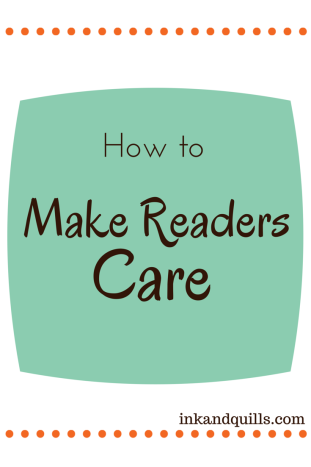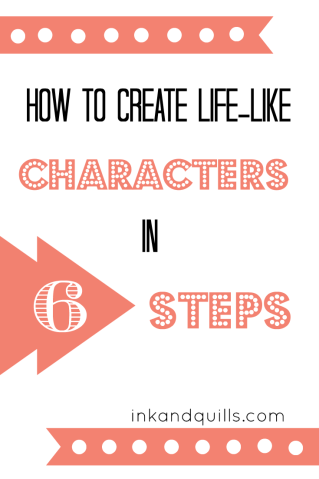
We definitely need more male protagonists in YA, but as a lot of writers are women it can be challenging to write from a guy’s POV. But ladies, I promise it’s not as scary as it seems!
I thought writing from the opposite gender is an important topic to cover, so I’ll be doing it in two parts–one for male POV, and one for female POV.
Today we’re going to explore how to write from a guy’s POV if you’re a girl. Obviously I have no idea what it’s like to be inside a guy’s head, so I asked my friend Brett to help me out! (Check out his awesome blog here).
He was kind enough to answer my questions with some really awesome insights into a guy’s mind that you ladies will find helpful (and maybe even surprising) in your writing. So I’ll shut up now and let you get to the good stuff 😉
What goes on in a guy’s head?
BRETT: The same things that go through most people’s heads. Responsibilities, deadlines, family, life. Sometimes, there’s just–nothing.
What do you think are some of the differences between how guys/girls think? How we approach a problem? A dangerous situation?
BRETT: In general, I believe girls are more likely to think empathetically (I’ll avoid using the word ’emotionally’ because of the bad connotations). Guys are (generally) more pragmatic–for every problem, there is a solution, but often the consequences don’t matter as much as simply solving the issue to begin with.
It’s generally true that girls approach a problem more logically–they can often see ways around a problem or solutions that guys just simply missed. Exactly how, I’ll never know. I think most guys just try the direct, brute-force way first.
With regards to a dangerous situation, I think all guys would like to assume they’d be the first to act bravely. Whether it’s a by-product of Hollywood’s era of stereotypical action guys, I think most men/guys would look for a physical way to end conflict–the quickest, most direct method you can imagine.
Depending on a guy’s natural physique–a big buff guy versus a smaller guy–it might be a direct de-escalation using physical contact, or via using an environmental object: anything blunt, heavy, or sharp.
How do guys deal with their feelings, especially anger and sadness? When should guy characters cry?
BRETT: Most guys like to imagine they don’t have those things called ‘feelings.’ It’s assumed that men should just bury their emotions and move on–this differs with personality traits, but the ‘push it deep down’ approach works 90% of the time. The remaining 10% of the time, it’s bottled up until it eventually bursts.
Guy characters should cry, but it takes a lot to push a guy to such an emotional breakdown–particularly one that isn’t anger. That’s the difference. You push a guy, he’ll get angry; you break a guy, he’ll cry.
So think out of the box here–you can’t just tear something away, that will only elicit a physical reaction (see above), whereas crippling a guy with something psychologically damaging will bring out the tears.
Men are different, but not complete robots. Losing a loved one will always make someone cry, but guys usually hold back their emotions as long as possible.
Do guys really think about sex all the time? How do they see girls? How much should we stress how guys notice girls?
BRETT: To the first question–don’t believe everything you read in Cosmo magazine. Men don’t obsess about sex, and if they do, they’re not the type of guy you want to hang out with.
To the second question–guys always notice girls. In the same way that guys always notice every threatening-looking guy in a room, or the same way they notice if there’s a television.
The second look–the double-take–that’s the big one. The first look doesn’t count, that’s instinctual. The second look means we’re interested, or at least, willing to double-check.
As for girls noticing guys…most girls immediately get the wrong impression, that a guy looking at them is instantly in love. He might be attracted to you, he might also think you’re out of his league.
Don’t forget that one–as a guy, the general rule of thumb is, “Unless you know otherwise, she’s taken.” To that extent, guys can look at girls, imagine what it might be like with her in a relationship, but then tell themselves a dozen reasons that wouldn’t work.
And again, speaking for almost all guys out there–please, girls take the first step. It’s very hard for us to gauge reactions and emotions, and subtle hints are almost entirely lost on us. Let us know if you have a boyfriend, let us know if you like us. Most guys don’t like the ‘chase’–please, just be upfront.
How do guys interact with other guys vs. girls?
BRETT: Guy conversations generally involve the least amount of words possible. Most guys only have two or three things in common with each other–sport, work, music, games, food; outside of that, there’s very little to talk about. Gossip is off the table–no guy has ever wanted to talk about ‘what happened last weekend’ unless it involved one of the five prescribed categories.
For talking with girls…it varies heavily on personality. Some guys are very shy around girls, some guys are full of confidence and swagger. Down the middle line, there’s people like me who just try to be amicable and get a laugh out of you, whether you’re a guy or a girl.
Depending on whether the guy thinks the girl may or may not like him affects how they approach the conversation. It’s not usual for guys to have platonic friendships with girls–either they’re hoping something might happen, or they’re so deep in the friendzone that they now consider you ‘one of the guys’ (which isn’t necessarily a compliment).
Tips for male dialogue?
BRETT: To the point. Guys have something to say, and they’ll say it. Conversations typically are on a topic that’s probably not all that important, until it eventually dies down when nobody has anything left to say.
If two guys disagree on something–watch out. Most guys are pretty hot-headed, and you can expect some flaring tensions and arguments over decisions or directions. Everyone has an opinion, and theirs is better than yours.
What about body language, gestures, mannerisms etc.?
BRETT: Almost all guys are defensive all the time. Lots of crossed arms, lots of small head-nods in agreement. Friendly guys will go for the back-slap or hair-ruffle (though ruffling is a bit demeaning, it’s the older-brother-little-brother gesture).
With girls, it’s far more awkward. Maybe some casual, testing-the-water touches. Otherwise, guys are typically quite self-conscious around girls, more so than most YA novels would have you believe.
Any gender stereotypes to avoid?
BRETT: All men are buff, awesome dudes who know how to fix cars and fight people. Also, avoid the ‘awesome hunk with giant muscles who’s also super funny and smart.’ Sure there are some smart people who are fit, but you don’t get everything in life.
All guys don’t know how to fix cars or jimmy locks. Create a character who isn’t absolutely perfect–everyone has flaws. Try for realistic guys who have actual weaknesses.
Any misconceptions to avoid?
BRETT: The misconception that guys are oblivious to girls’ feelings. We understand, we just don’t know what to do about it.
Also avoid the ‘skinny dudes are awkward nerds.’ I’m pretty lightweight, but not a nerd. Believe it or not, girls can fall in love with a guy who isn’t Fabio. Endlessly reading novels about the super-awesome-muscles-guy who gets the gorgeous girl gets old fast, and doesn’t represent the real world’s concept of love–which is far more than just big muscles and square jaws.
Any tips for balancing the physical and internal aspects of a guy character? I feel like there’s a danger of making him all physical with no emotion.
BRETT: Same as above, really. Balance is the key–big buff guys aren’t completely oblivious, they just don’t know how to respond; on the other side, non-physical guys can be smart and perceptive.
And guys are complex–we have feelings, emotions, pasts that we bury and don’t talk about. Try opening a guy up, explore him. Why is he big and buff? Is it because his father was a footballer and pressured his son into becoming a quarterback? Does the guy regret slacking off on his education to pursue that physical image?
And the skinny guy–what’s his past been? Bullied, had his self-esteem cut because the world tells him that only strong, awesome guys get the girls? Does he harbor resentment towards those people?
Have you ever read any books with male characters by women authors that were poor representations? i.e. What NOT to do?
BRETT: Almost (emphasis on almost) every YA novel written by a female author portrays the ‘perfect guy’ with the rippling muscles, chiseled jaw, moody eyes, and gentle touch.
Fiction isn’t meant to be a complete fantasy–it should be realistic, and not create dreamboat characters who can do no wrong, who have no flaws physically or mentally.
If you want a balanced guy character, read YA’s written by MALE authors, who know this better. Think Thomas or Newt from The Maze Runner–lean, determined, equal parts brave and afraid. Think Connor from Unwind–strong, good-looking but blinded by his own goals, and occasionally insensitive.
There are two ‘good’ examples from a female author–Peeta from The Hunger Games comes to mind. Although Gale is portrayed as the standard, awesome-buff guy, Peeta is..not. He has core strength, but he’s just a baker’s son, never actively shows us any specific attributes indicating he’s a hunk. He’s just a guy who mistakenly loves a girl out of his league. A rather perfect character for me.
And J.K. Rowling of course did an outstanding job with Ron Weasley. Harry…not so much. But Ron proved that even the most awkward, bumbling guy can grow, can become a sports star, can get the girl, without having the ‘hero’ swoop in and steal the show.
And on a final note–please, please, please write a CHARACTER first. Write a human being with goals, desires, secrets, resentment, and happiness. Write a PERSON that the reader can empathize with. Readers want to be entertained, and they want the character to achieve their goal; whether they’re a guy or a girl, it doesn’t matter.
Wow–thanks, Brett!!! So there you have it ladies! Hopefully this valuable insight will help you create awesome male characters and make you more confident about writing from their POV. Any thoughts or questions? Post them below–Brett will be swinging by the blog to answer them 🙂
UP NEXT: On Saturday we’ll look at how to write from a female character’s POV if you’re a guy. Hope to see you then!

 Everyone wants a strong heroine.
Everyone wants a strong heroine.




 Sympathetic
Sympathetic





